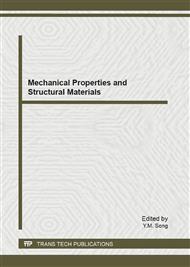p.175
p.180
p.185
p.189
p.194
p.202
p.206
p.210
p.214
Cooling Simulation of an Injection Mold with an Embedded Insert
Abstract:
This paper proposes a numerical model of cooling analysis of an injection mold that has an embedded insert. The Boundary Element Method (BEM) is employed because of its popular usage in this area. The key problem in model building is how to involve the independent surface between mold and insert into the BEM equations and how to give the natural boundary conditions on it. This problem is solved by using coupling BEM which provides an attractive alternative in that the natural boundary condition is shifted to the surface between part and mold. So, instead of using the finite differentiation method, the boundary condition can be determined analytically. This is useful in improving the accuracy of cooling analysis.
Info:
Periodical:
Pages:
194-201
Citation:
Online since:
October 2012
Authors:
Price:
Сopyright:
© 2012 Trans Tech Publications Ltd. All Rights Reserved
Share:
Citation:


